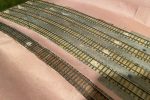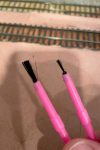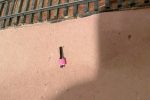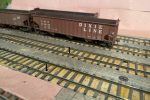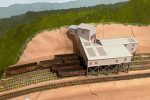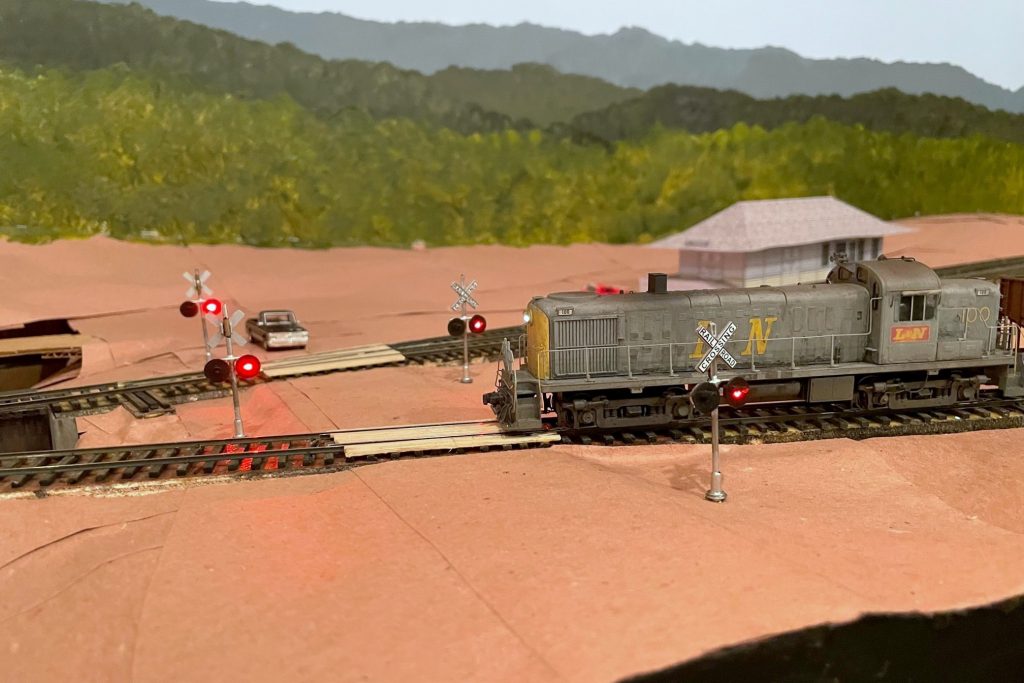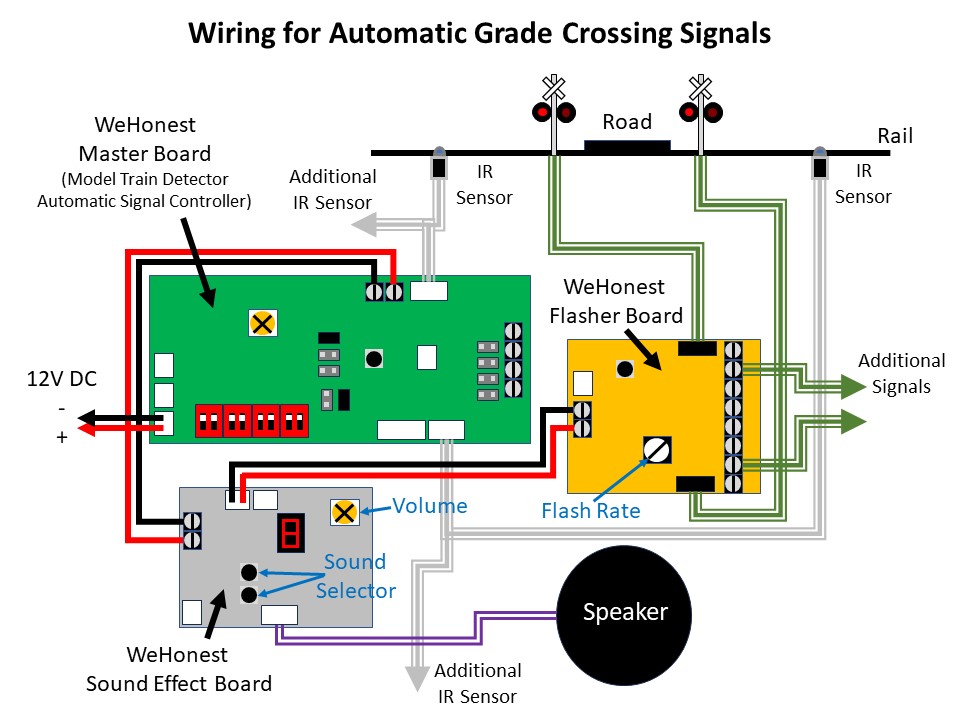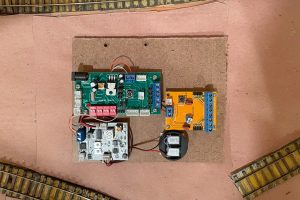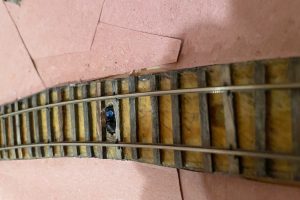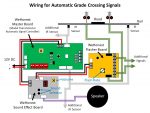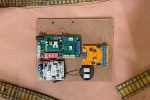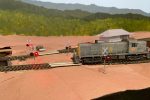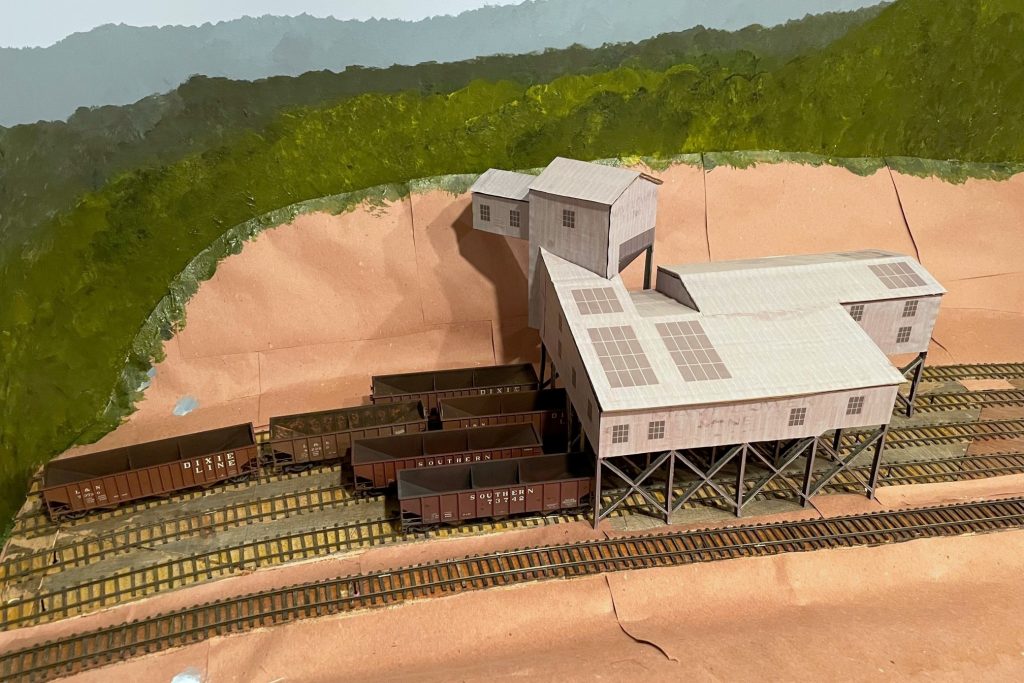
The ability to set handbrakes to keep cuts of cars in place on a grade is a crucial part of railroading, and a model railroad is no different, especially one set in the Appalachians. I’ve covered my technique for building manually deployable handbrakes via a retractable wire between the rails (article here), but the controllable brakes are complicated to make and install, so I reserve them for areas where I’ll be holding long cuts of cars on a steep grade or for where I need to hold a car for a while and then let it loose for some “gravity assisted switching.” But there are several dozen spots on the layout where I’ll need to spot small cuts of cars on slight grades, so for these areas, I wanted something simpler. I also like free-rolling cars, so tricks like putting a tiny spring on the end of one of the axles was also off the table–it needed to be something in the track. Enter the cheap plastic paintbrush! Each paintbrush handbrake costs just cents to make, and I can easily make and install a dozen in under an hour.
I picked up a box of 100 inexpensive plastic paintbrushes a couple years ago when the local Christian bookstore was having a big sale. I didn’t know how I would use them, so I put them away for a rainy day. That day came when I was playing around with different ideas for holding cars in place. It needed to be something I could roll cars and locomotives across easily without derailing or causing too much friction that would also be sturdy enough to hold a car when spotted over the brake. I first tried two methods that I’ve seen work for others. The first is a little dot of CA on top of the rail, but many of my spotting points were just too steep for this. Next I tried little lengths of fishing line mounted between the rails–these are good because they’re tough to see and work pretty well, but they make a noticeable “plink” every time they clear an axle or a hopper bay… in sections of the yard where I had several in a row, it sounded like a tiny music box playing a discordant tune!

Then I remembered the brushes. The plastic bristles are pliable enough to give when trains are moved across them but stiff enough to hold a car when no other force is exerted. They could also be trimmed both in height and in density using a pair of scissors. They are certainly more noticeable than the fishing line or CA dots, but my hope is they’ll blend right into dirty coal-covered tracks, and those that don’t blend in can be painted to look like weeds. Even with nothing to disguise them, I find they don’t draw the eye much anyway.
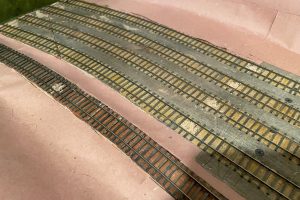
The first step is to locate where you want to install the “brake.” Figure out where you want the car or cut of cars to sit, then mark the spot where the most downgrade axle will sit–this is where you want the brake. In some cases, like the end of a track, you can mark the spot of the downgrade axle of the upper truck–I use this at the end of stub tracks where I need all the room I can get. For tipple tracks, I find it useful to have up to four handbrakes per track. One at the uphill end of the empty track to hold a full cut of empties, one just above the tipple to hold a shorter string of empties, one just below the tipple to hold a shorter string of loads, and one just before the fouling point of the downhill switch to hold a longer string of loads (or any “gotaways”).
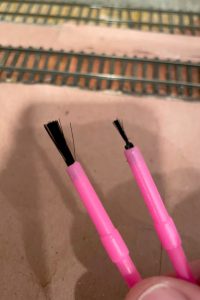
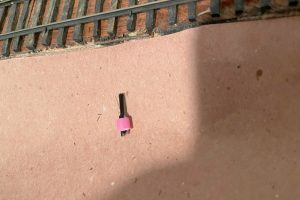
The second step is to drill a hole between the ties for each hand brake location. I found a 5/32″ bit drilled about 1/4″ deep worked for my paintbrushes, and I offset my holes closer to one rail to avoid constantly hitting delicate air hoses on cars. To prep the paintbrush, I first cut off about 3/16″ of the bristles with scissors–the idea is to have them tall enough to catch axles but not the sills of the cars or cut levers. Then I thin out the bristles by repeatedly cutting into the brush with just the tip of the scissors while rotating the brush around. How much you thin it out depends on the grade and how many cars you want to hold, but for my light grades, I trim down to about the last 20 or so bristles. It’s easy enough to thin them a bit more once they’re installed, and if you get it too thin, it’s easy to just make another. Then I use scissors and cut off the brush end of the paintbrush leaving about 3/16″ of the plastic handle to keep the bristles secure. Installing them is usually a press fit, but if they’re loose, a little carpenter’s glue will help hold them in place. I press them down until the handle is below the ties where its bright color will be covered up by ballast.
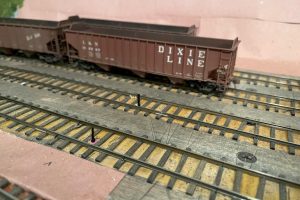
The final step is to test the brake by running strings of cars across them to make sure they don’t derail and don’t cause any noticeable jerking movements in the cars (if you look closely, you’ll see some movement, you just want to avoid it being distracting). When you let go, the cars should roll and then come to a gentle stop once they hit the brake. Also test a locomotive across each brake to make sure it doesn’t interfere with the trucks (this is the most stressing pressure on the brake). On steeper grades, you may find having a few brakes in series is needed to stop a string of rolling cars, or you may have to spot the cars exactly on the brake to prevent them from rolling in the first place. It’s easy enough to add and remove these brakes while you’re trying to figure things out. In the end, I’ve found this is a great way to hold cars in place without the worry of damaging cars or scenery, and it’s tough to beat the price and ease of installation!


